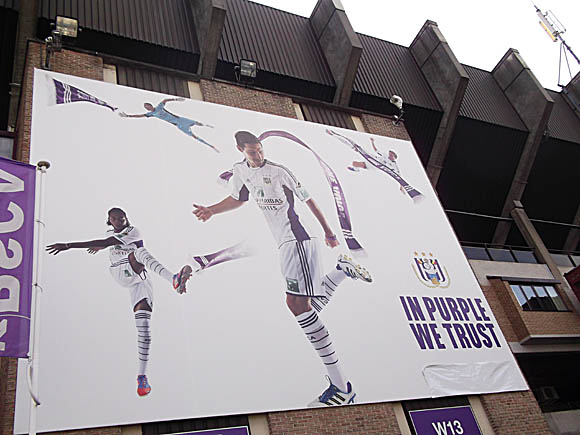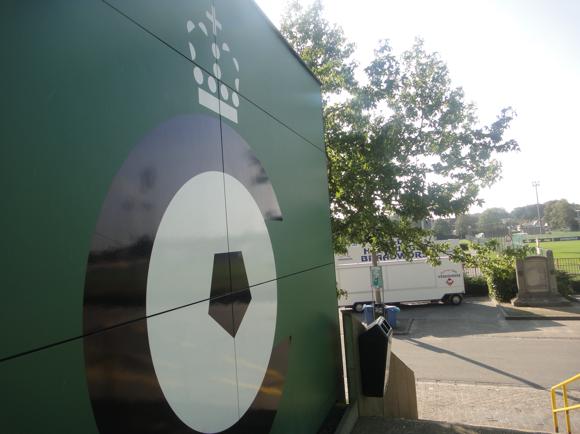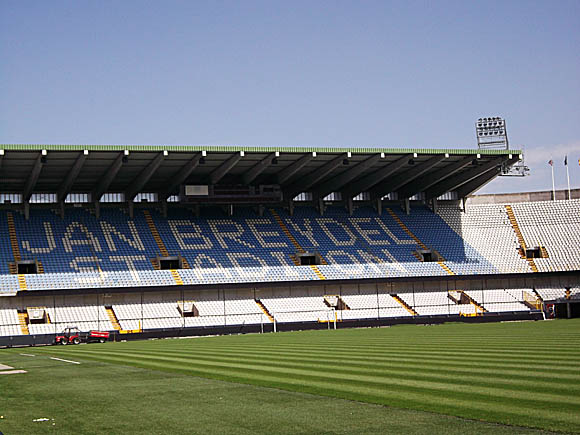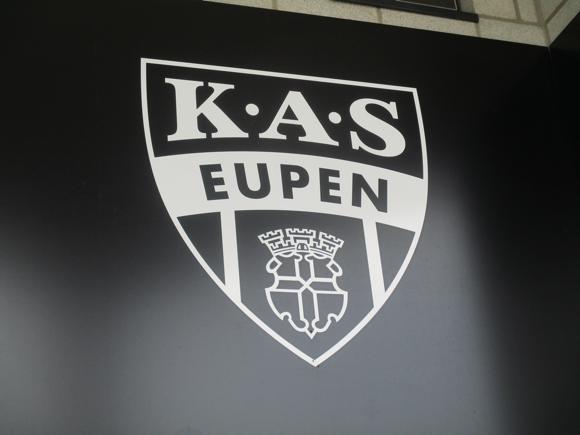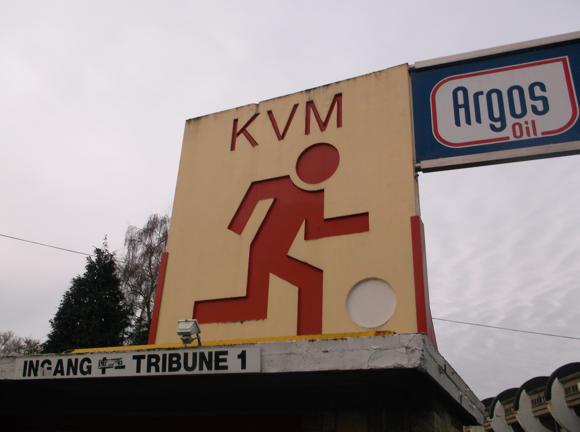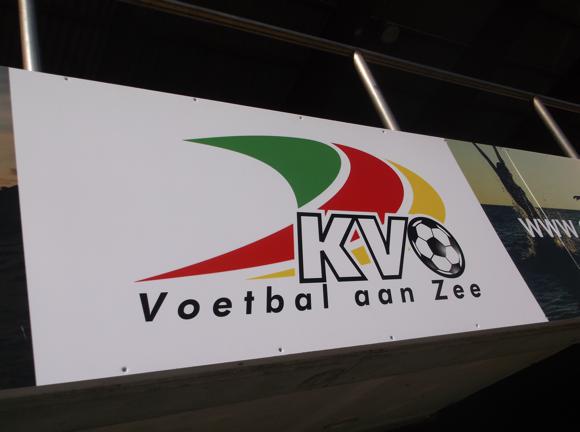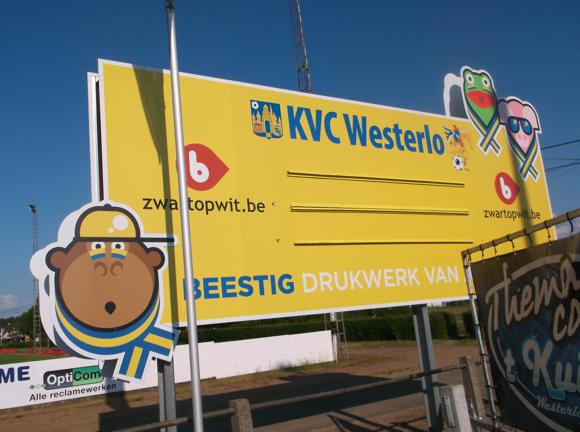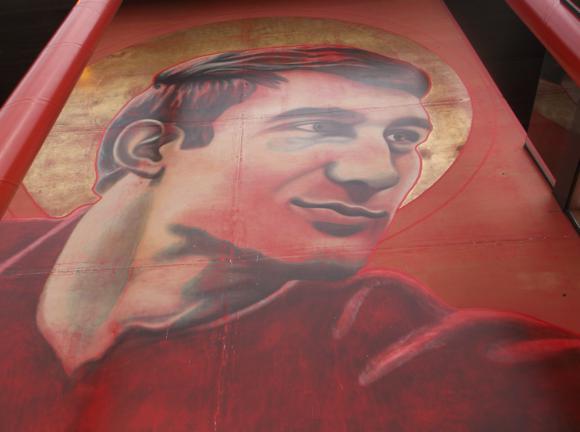A fan’s guide – the club from early doors to today
Only two clubs have won more Belgian titles than Union Saint-Gilloise: Anderlecht and Club Bruges. The last of their 11 championships, however, was won in 1935 and few Unionistes thought their club would ever add to this total in anyone’s lifetime.
After all, USG had last played top-tier football in 1973 and played on the European stage in 1964. And yet, within three years of Brighton chairman and expert poker player Tony Bloom taking over the club in 2018, Union had gained promotion to the First Division A.
Within four, the club would come very close to qualifying for the Champions League group stage. And yet, a trip to Union’s World War I-era Stade Joseph Marien remains essential for any football romantic.

Can there be a more atmospheric venue in all of Europe? A football venue from the 1920 Olympic Games cut into an expanse of wild urban green, the ground is in the district of Forest, bordering leafy, crumbling St-Gilles. A clubhouse steeped in football history completes the picture. No wonder Union’s brief but brave Champions League campaign in 2022 was switched to Leuven.
Around St-Gilles, Marolles and other traditional neighbourhoods, many a bar sports the yellow and blue of Union, considered the Brussels club.
Successful pioneers in early regional tournaments, Union dominated the Belgian championship in the early 1930s. With Belgian World Cup goalkeeper André Vandeweyer, also their post-war manager, Union went a record 60 league games unbeaten, between January 1933 and February 1935. Spells in Europe in the early 1960s preceded a long period of yo-yoing between the second and third divisions.
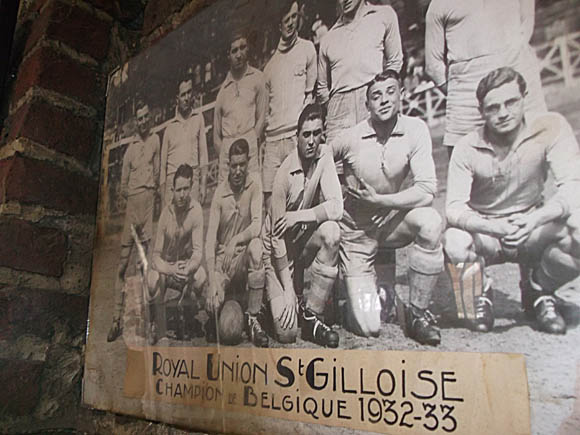
With Brussels hosting so many trade conventions, the criteria for entry at the time, the Fairs Cup allowed Union to meet the likes of Roma, Juventus, Hearts and Birmingham City, even when domestic progress was few and far between.
USG spent most of the pre-Bloom era in the third tier, having flitted between top and second divisions in the 1960s. In 2014, the venerable club had narrowly missed out on promotion from the third after winning through to the play-off final – only to lose 3-2 to Patro Eisden Maasmechelen.
The financial meltdown of several key clubs the following season, however, allowed USG to nip in. By the time Brighton owner Tony Bloom was sniffing around for a viable investment in Europe, easily accessible from the UK, the club that fitted the bill was firmly embedded in Belgium’s second tier.

Equally crucial to the equation were Bloom’s business partner, Alex Muzio, a data-driven gambling guru, and Irish sporting director Chris O’Loughlin, with experience coaching in Africa and Australia. Sacking manager Marc Grosjean, the team still needed a couple of seasons to click, though fans would have enjoyed Union’s shock 3-0 cup win at Anderlecht courtesy a hat-trick by little-known French striker Youssoufou Niakaté, who then skipped off to Saudi Arabia.
Relying on analytics to hire players and coaches, they struck lucky with Felice Mazzù, who had transformed Charleroi over several seasons in the 2010s. In two campaigns, the Italo-Belgian former PE teacher not only led Union into the top tier for the first time in 48 years, he also brought them almost improbably close to the Belgian title to add to the previous one won in 1935.
Captained by Maltese international midfielder Teddy Teuma, plucked from lower-league football in France, USG sparkled up front thanks to young winger Dante Vanzeir, who Mazzù knew from his days at Genk. Goals were provided by powerful German striker Denis Undav, later to sign for Brighton and be loaned back to USG.

Away from the figures and spreadsheets, team spirit was another key factor in the mix, experienced centre-back Christian Burgess providing the character and stability garnered from combative seasons at Hartlepool, Peterborough and Portsmouth.
Beating Anderlecht on the first day of the club’s first top-tier campaign since 1973, Union stormed ahead in the First Division A, ending the regular season five points clear of the only challengers, Bruges.
Defeats home and away to the many-titled Flemish side saw USG fall away to a runners-up spot at crunch time, guaranteeing the club a first crack at Europe since a narrow defeat to Juventus in 1964. They would be doing so without Mazzù, snaffled up by Anderlecht, and replaced by former Belgian international midfielder Karel Geraerts in his first coaching post.
Entering the Champions League at the Third Qualifying Round stage, Union had to overcome a resurgent Rangers. Switching the home leg to Leuven, USG overran the Scots, scoring through Teuma and Vanzeir but were denied a third by reserve keeper Jon McLaughlin. It was to prove crucial, as Rangers stormed back to win 3-0 at Ibrox. An evenly balanced group in the Europa League then promised six exciting fixtures for the autumn.




Stadium Guide
The field of dreams – and the stands around it



The Stade Joseph Marien has barely changed since Union St-Gilles last topped the league in 1935. Opened in 1919 with a gala match against Milan FC (today’s AC Milan), the ground had an original capacity of 25,000. The changing rooms were in the woods, the players having to run through the crowd to get to the pitch.
After reconstruction in 1926, the stadium was said to be the finest in Belgium, the Art-Deco touches to its façade still visible today. improvements to facilities by the incoming ownership saw capacity rise to 9,400, around the smallest in the Belgian First Division A and causing European games to the switched to Leuven.
The South Stand, Tribune Sud, is for away fans, the North Stand, Tribune Nord, the home end. The main stand, Tribune Ouest, contains the VIP and press sections.
getting there
Going to the stadium – tips and timings

Union have their own stop on the 32 and 82 tramlines, both six stops from Gare du Midi. Alighting from the tram, cross avenue Van Volxem and head up rue des Glands – the stadium will be on your right once you reach the top of the street.
getting in
Buying tickets – when, where, how and how much

Union tickets go on sale about two weeks before every home game, the first three days’ sales for members only. At present, buying membership is not possible online, only in person through the Fanshop (see below What to buy).
Advance purchases are best carried out online, and are €2 cheaper in most cases. A ticket office (Tue-Fri 10am-1pm, 2pm-6pm) also operates by the Fanshop. Availability runs out pretty fast these days, so get in early, and don’t expect tickets to be sold on the day.
For all enquiries, contact ticketing@rusg.be.
All games are categorised Category B apart from A-rated Anderlecht, Club Bruges, Antwerp, Genk and Standard Liège. Over 23s, 12-23s and seniors pay €12 in the home North and sideline East Stands, €15-€17 for Category A games. It’s €17-€20 in the sideline West Stand, €32-€47 in the prime C section. Under-12s are charged the same, but it’s only €8-€13 for them in the East Stand.
The South Stand is for visiting supporters, who source their tickets through their own club.
what to buy
Shirts, kits, merchandise and gifts
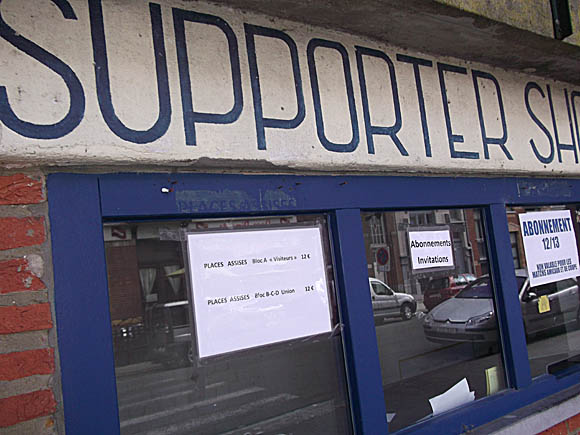
A Fanshop (Tue-Fri 10am-1pm, 2pm-6pm) at the stadium, with match-day merchandise on sale from 1hr 30mins before kick-off, and up to 1hr after the game, in the Club House bar.
Union On Tour T-shirts and casualwear are all the rage in 2022-23, along with souvenir scarves detailing USG’s Europa League group fixtures. Home shirts are the traditional yellow with classic round collars and three-quarter sleeves in blue. Away is white with neat, thin yellow-and-blue V-neck collars and cuffs. Third choice is blue with yellow-and-blue collars and cuffs, again V-neck.
Kids will love the face-painting sticks, tacky sunglasses and beach rackets. Umbrellas come in handy during those rainy Brussels evenings.
Where to Drink
Pre-match beers for fans and casual visitors







The first port of call should be the parvis de St-Gilles, five stops on tram 97 from Union. There, on one corner, the Brasserie de l’Union (No.55) is a favourite meeting place, with notices for away trips amid the classic bohemian décor.
At the stadium, the Union’s Taverne on the corner of rue du Stade and chaussée de Bruxelles contains a jukebox and plenty of football talk.
Pride of place goes to the Club House, a wood-and-brick palace of football memorabilia, worth the trip alone to Forest, even on non-match days. As well as Union paraphernalia – the team of 1932-33, the plaque to Jef Valise, the ‘eternal Unioniste’ who used to carry his uncle Jacques’ kit bag to home games – there are decorative nods to the great Torino side who perished at Superga, pennants of obscure Greek sides, even West Ham get a look-in.
The back door leads out to the main stand, the pitch, and a they-play-here? backdrop of forest greenery.


